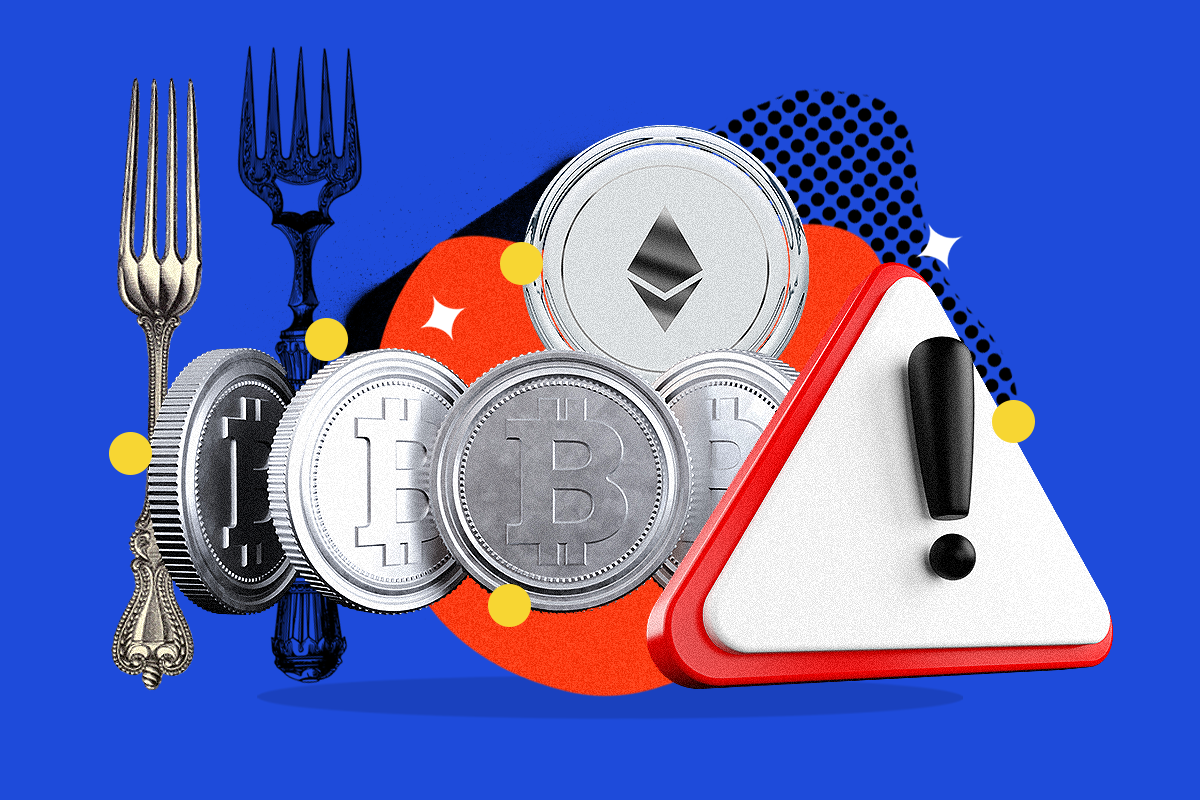Another Turning Point: What Is a Hard Fork?
Consensus protocols work great until they don’t. Here’s what happens when blockchain validators can’t agree on the rules.

One thing the civic world and the Wild West of blockchain capitalism have in common is that they’re both governed by rules.
While it’s a common misconception that hard forks cause one blockchain to split into two separate blockchains, this isn’t necessarily true.
While the laws of the physical world are selected and enforced by centralized authorities, the arbiters of the rules that govern blockchains are validators whose influence is directly proportional to the resources they contribute to running the network.
But what happens when the majority of validators can’t agree on the rules? Here’s what you need to know about the concept of a hard fork and how it relates to Ethereum.
What is a consensus protocol?
Consensus protocols are the foundational rules that allow blockchains like Bitcoin and Ethereum to stay decentralized and secure for all users. However, such protocols aren’t static since they can be subject to change if the majority of validators—computer nodes that propose new blocks and authenticate transactions—agree to those changes. A change to the protocol that causes the new version of the blockchain to be incompatible with the old version of the blockchain is called a hard fork.
What is a hard fork?
Unlike a soft fork, which allows validators to use either the new or old protocol to participate in consensus and confirm transactions, a hard fork in cryptocurrency is when a new blockchain protocol diverges so much from the old one that it becomes technically incompatible with it. Despite the infrequency of hard forks, they have occurred a number of times on blockchains such as Bitcoin and Ethereum.
What does ‘hard fork’ mean?
While it’s a common misconception that hard forks cause one blockchain to split into two separate blockchains, this isn’t necessarily true. When a hard fork occurs due to an amendment to the consensus protocol, it’s up to the validators to honor the amendment to the protocol and begin validating the new blockchain.
How does a hard fork affect price?
If enough validators choose not to respect the hard fork, they may continue participating in the old consensus mechanism. If both the fork and the original chain are successful, this results in the emergence of two separate blockchains: one that continues the legacy of the old blockchain and another that affirms the changes to the consensus protocol. An additional consequence of a hard fork is the creation of two separate native crypto coins with different properties like price.
What are replay attacks?
The biggest implicit risk of a hard fork is a replay attack, which is when a transaction on one fork of a blockchain is duplicated or “replayed” on the other fork of a blockchain. Hard forks result in two viable blockchains with the same transaction history but that have two separate native cryptocurrencies on identical ledgers at the time of the split. In other words, this means that a hard fork could result in one crypto wallet existing on two different blockchains with two different native currencies.
What is replay protection?
Subsequent forks of a blockchain are incompatible with each other since they’re unaware of each other’s existence, so one way of preventing a transaction on one fork from existing on the other fork is by adding extra data that identifies which blockchain it’s for. This is called replay protection and it can either be implemented at the protocol level or by a custodial crypto service that implements a way to safely separate the two forked cryptocurrencies.
Ethereum hard fork
One of the first significant hard forks in the blockchain world was the splitting of Ethereum into two separate networks: Ethereum and Ethereum Classic. Although the implementation and implications of the Ethereum hard fork were technical, the reasons for why it occurred were mostly philosophical and ideological.
On July 20, 2016, the Ethereum hard fork occurred on the 1,920,000th block of the chain. This split was implemented due to an exploit in the smart contract governing the first and, at the time, largest decentralized autonomous organization known simply as The DAO. This exploit enabled malicious actors to siphon 3.6 million ETH from the DAO smart contract that held 11.5 million ETH—roughly one-tenth of the total Ether supply at the time.
The DAO hard fork
The hard fork that was implemented to roll back the blockchain in order to recover the stolen DAO funds also created a contentious split in consensus that resulted in two separate blockchains: a new Ethereum that had the backing of Vitalik Buterin and his non-profit Ethereum Foundation, and a competing blockchain known as Ethereum Classic that was created by validators insisting on continuing to support the original Ethereum blockchain.
Another side effect of the DAO hard fork was the creation of two separate cryptocurrencies: ETC on the original blockchain now dubbed Ethereum Classic and ETH on the new forked version of Ethereum. ETH has since prevailed as the superior crypto over its competitor and sister currency ETC, with each continuing to live on its own fully-fledged independent blockchain.
Bitcoin hard fork
Another notable instance of the hard forking of a blockchain was that of Bitcoin on August 1, 2017, which resulted in the creation of Bitcoin Cash and its native BCH crypto. Unlike the Ethereum DAO fork which stemmed from a mostly philosophical question of whether to let the DAO thieves get away with the stolen Ether, the Bitcoin hard fork was the result of a technical debate over block sizes, but which had philosophical implications as well.
The contention was over augmenting the size of Bitcoin’s transaction blocks from one megabyte to eight megabytes so that the network could handle a higher volume of transactions at once. On the one hand, Bitcoin needed to increase block sizes in order to scale the network and have it compete with other blockchains that could process transactions faster.
On the other hand, increasing block sizes would threaten the decentralization of the Bitcoin network because it would make validator nodes more expensive to operate and incentivize higher fees for faster transaction speed, thus making the network less economically accessible or viable to operate. The dominance of the original Bitcoin blockchains is the result of the proliferation of and strong support for maintaining small block sizes as a way to uphold the philosophy of unfettered decentralization.
